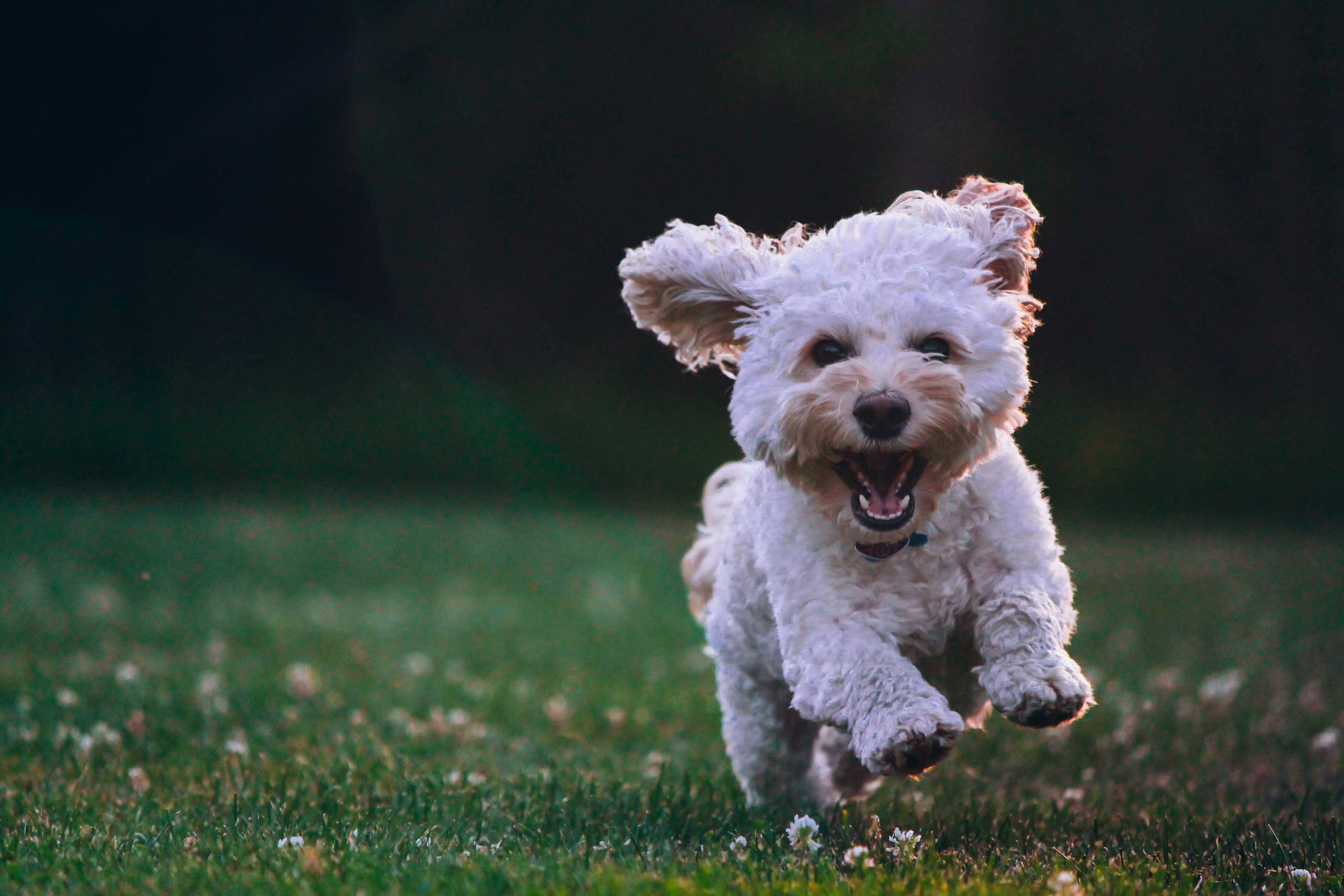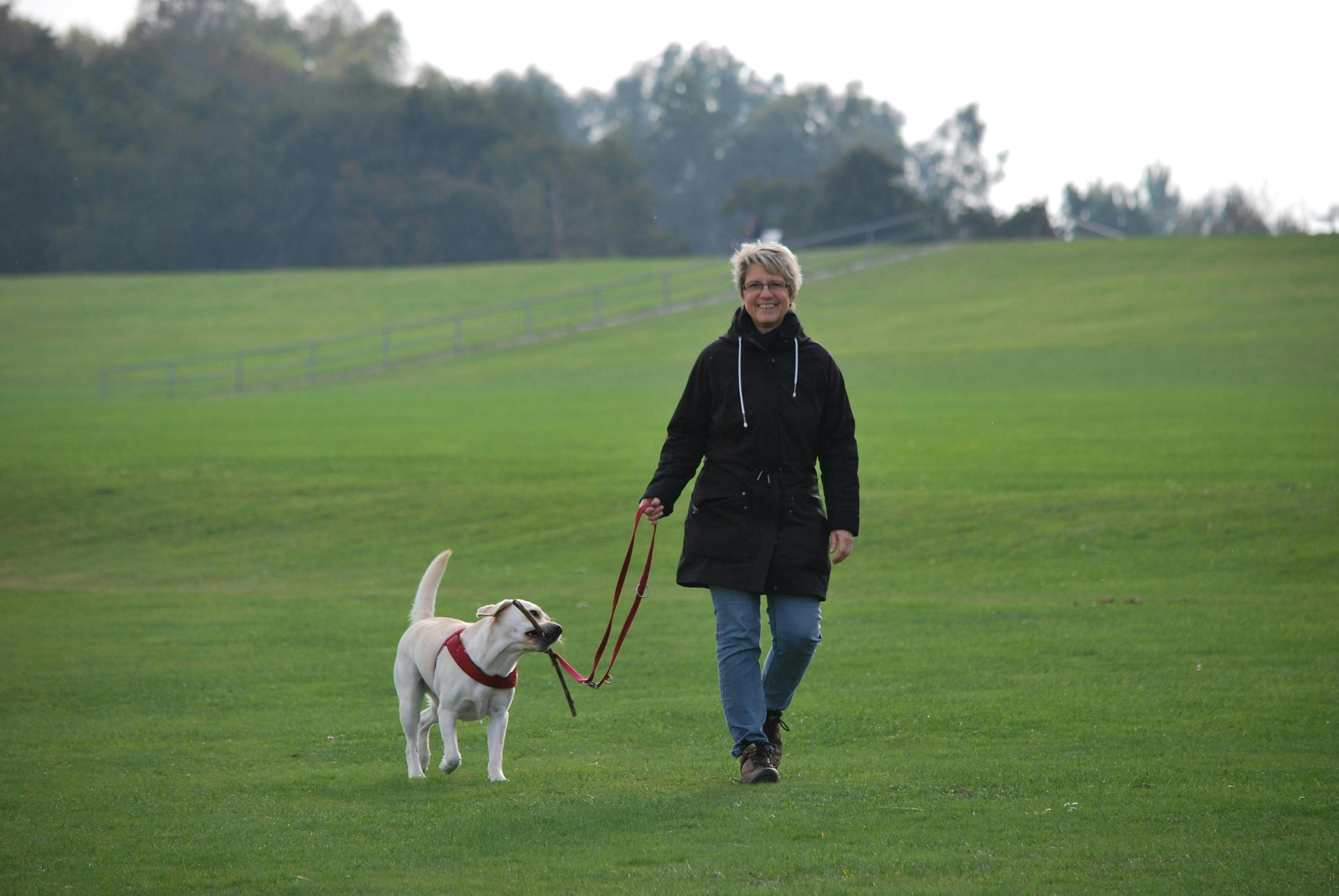Why You Should Take Your Dog on Sniffari Walks
Training Tips | By: TAYLOR WYLLIE, KPA CTP | Aug 04, 2024


Unlock 10 Expert Puppy Training Tips!
Sign up with your email and receive a free video guide to transform your puppy into a well-behaved companion
Dog’s noses are so incredible it’s almost like they’re magic.
They can tell identical twins apart.
They can detect cancer.
They can sniff out invasive weeds across huge swathes of land.
All that to say, a dog’s number one sense is smell.
The world they “see” through their noses is as rich and diverse as the world we “see” through our eyes. (A dog’s sense of smell is about 1,000 times (!) better than ours.)
As dog owners it’s our responsibility to let them engage with the environment in a way that comes naturally to them—and that’s through smell.
Enter the sniffari.
What is a Sniffari?
A sniffari is a walk with the sole purpose of letting your dog sniff.
It’s the mashup of the words sniff and safari—letting your dog go on a sniffing journey is in the name!
They’re done on a long leash, so your dog has optimal space to zigzag and follow scents. They get to lead the way, going wherever their nose carries them, as long as it’s not dangerous or illegal.
If your dog wants to cross the street, let them.
If they want to stay in one spot for fifteen minutes, let them.
If they want to suddenly stop and explore a patch of grass that looks identical to all the other patches of grass, let them.
On a sniffari, you don’t need to worry about distance traveled or if your dog is at your side (in fact, they probably won’t be at your side). It isn’t a walk for exercise or training. Try and let go of all ideas of what a traditional walk should look like and embrace the slow-paced, meandering nature of following a dog following scents.
I’ve heard some people say that a sniffari must be done in some kind of natural environment, whether that be at a park or on a hike. I think that’s too limiting. Of course, it can be beneficial to take your dog into nature, but a sniffari can be done anywhere.
In fact, my dog’s favorite place to go on sniffaris is business parks—it’s boring for me, but he has the time of his life crisscrossing the parking lot.
You can take your dog on a sniffari in your neighborhood, city block, woods, at a park—anywhere that dogs are allowed and is safe. (Some people prefer to avoid walking their dog on a long leash in areas with lots of traffic, in case their dog will dart into the street. Know your dog and your leash handling skills and make that decision for yourself.)
How to Go on a Sniffari
First, grab a 12 to 15 foot leash. My favorite leashes are the biothane leashes from High Tail Hikes and Grisha Stewart’s BAT leashes. I don’t suggest longer than 15 feet as the leash can become too difficult to handle while walking.
Next, harness your dog. My favorite harnesses are The Balance Harness and the Ruffwear Front Range Harness. I don’t recommend walking your dog on a long leash with their collar, as a sudden jerk at the end of the leash could seriously harm their trachea.
Now you’re ready to head out the door.
Remember, this walk is for the sole purpose of letting your dog explore the world with their nose. So, follow your dog wherever they deem to go. (Again, as long as it’s safe and legal.)
Depending on your personality, it may be tough for you to be patient while your dog sniffs. It may not be visually stimulating to watch your dog inhale every leaf or blade of grass you walk past, but take heart in the fact that your dog is experiencing the world they way they were built to.
It may take some time to get used to handling a long leash. Grip the handle between your thumb and forefinger with one hand.

Use the other hand to shorten or tighten the leash as needed, keeping a “smile” (a curved bit of leash) between your hands. Gather any excess leash in your handle hand, being careful not to wrap the leash around your hand, as this could cause injury if your dog suddenly yanks. Instead, lay the excess leash in your palm. Check out this video from Grisha Stewart if you would like to see leash handling skills. (Note, she uses long leashes in her rehabilitation training for reactive dogs and mentions that in some of her videos. But the skills apply to walking all dogs on long leashes, reactive or not.)
Your dog may not be the best at following their nose when you first introduce sniffari walks. This could be because they’ve never had the chance to walk this way. You can bring treats and scatter them along the sidewalk to encourage your dog to sniff more (this will also help if your dog starts pulling at the end of the leash).
One of my client’s dog’s initially did not sniff on walks, even on a long leash. She thought he might not be like other dogs and enjoy sniffing. That wasn’t the case—he simply wasn’t in the habit of it. After a few weeks, where we did sniffaris as well as other scent games, he got the hang of sniffaris and started to sniff anything and everything, which vastly improved his behavior overall.
Speaking of…let’s talk benefits.
What are the Benefits of a Sniffari?
Studies have shown that allowing dogs time to sniff reduces anxiety, makes them more optimistic, and helps them be happier overall.
Speaking from experience, I saw a big difference in my dog’s reactive behaviors after we implemented sniffaris into our daily routine (mainly, he was much calmer). I’ve seen this time and again with my clients as well.

Even my sister’s puppy—who is not reactive—benefits from sniffaris as it tires him out and helps mitigate all those annoying puppy habits.
Sniffaris are also a form of mental enrichment, which is as important as physical exercise for dogs.
Convinced yet?
If not, keep in mind that sniffaris are also fun. They’re a great opportunity to bond with your dog and appreciate them for how they experience the world. I especially love following my dog on snowy days when I can visually see the tracks and pee puddles he chases, which are invisible to me other times of the year.
Finally, sniffaris allow your dog to catch up on gossip—any animals who’ve visited, the diets of other dogs, if any of his friends have been in the area, etc.
How Often Should I Take My Dog on Sniffaris?
Between my partner and I, we take our dog on a sniffari every morning. They’re nothing special—simply a twenty to thirty minute walk around the neighborhood.
We aim to take him on special sniffaris outside of our neighborhood a couple of times a month.
Now, there are two of us, we don’t have children, and we both work from home. I understand not everyone has the time to commit to a daily sniffari. If that’s the case, I recommend a sniffari at least twice a week and to do other nose work games with your dog on a daily basis (these games can be easily done with your dog’s dinner, such as feeding them from a cardboard box, a wobbler, or snuffle mat.)
Should All Walks Be Sniffaris?
You will likely need to take your dog on walks for reasons beyond letting them sniff. Maybe you need to get somewhere, maybe you want some exercise, or maybe you live in an apartment and need to take your dog on a walk to do their business. That’s absolutely fine—as long as you know ahead of time what kind of walk you’ll be going on.
I also suggest cueing your dog if a walk is a sniffari or not. There are different cues you can use that your dog will pick up on. As I already mentioned, my husband or I take our dog on his sniffari in the morning, which means he expects to be able to lead the walk with his nose every time we take him out in the morning. We don’t do this on other walks throughout the day.
A simpler way to cue your dog on whether a walk is a sniffari or not is by using a long leash for sniffaris and a standard 6-foot leash for other walks. You may also choose to go to areas without as much stuff to sniff on your standard walks, just avoiding temptation.
If your dog still gets caught up in the smells and you need to hurry them along, instead of pulling them down the street, I suggest playing the one, two, three game. Start by training this game inside or while your dog is stationary. Say out loud, “one,” “two,” “three” and toss a treat on three. Soon, your dog will anticipate the tossed treat as soon as you say “one.”
I play this game all the way back to my house if I have places to be and my dog is too caught up in sniffing. That way, he still gets to have fun and use his nose, I get to walk quickly home, and I don’t have to yank on his leash, which only increases both of our frustration.
Conclusion
By allowing your dog to explore the world through their nose, you’re catering to their natural instincts. Whether you’re exploring a new trail or simply taking a leisurely stroll around your neighborhood, sniffaris can transform ordinary outings into exciting adventures for your dog.
Embrace the joy of sniffaris, and watch as your dog becomes happier, more relaxed, and more engaged with their environment.
Disclosure: some of the links in this blog are affiliate links. We receive a small commission for purchases made through these links at no extra cost to you. This helps support us and allows us to continue to put out free content to help you and your pup. Thanks for your support!










